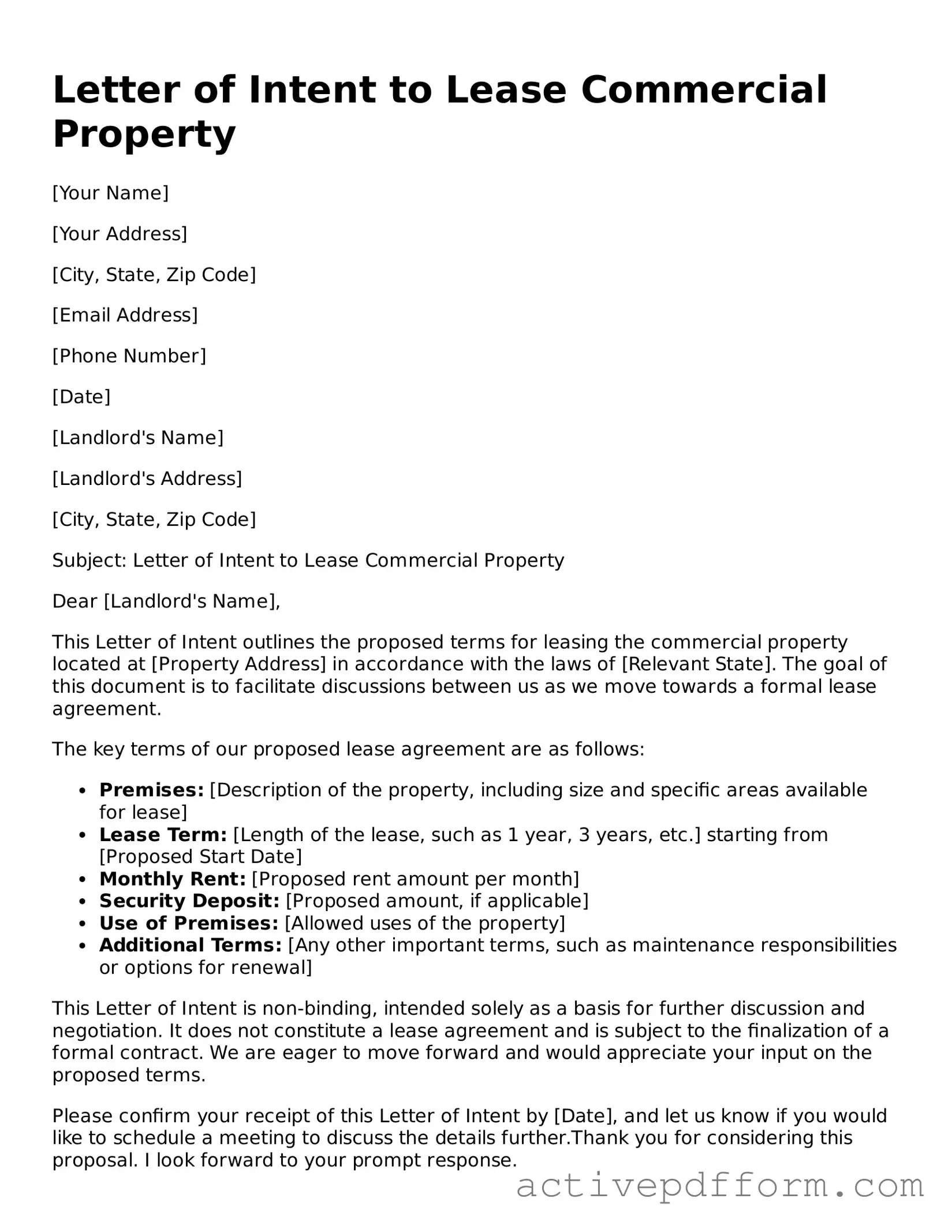Letter of Intent to Lease Commercial Property
[Your Name]
[Your Address]
[City, State, Zip Code]
[Email Address]
[Phone Number]
[Date]
[Landlord's Name]
[Landlord's Address]
[City, State, Zip Code]
Subject: Letter of Intent to Lease Commercial Property
Dear [Landlord's Name],
This Letter of Intent outlines the proposed terms for leasing the commercial property located at [Property Address] in accordance with the laws of [Relevant State]. The goal of this document is to facilitate discussions between us as we move towards a formal lease agreement.
The key terms of our proposed lease agreement are as follows:
- Premises: [Description of the property, including size and specific areas available for lease]
- Lease Term: [Length of the lease, such as 1 year, 3 years, etc.] starting from [Proposed Start Date]
- Monthly Rent: [Proposed rent amount per month]
- Security Deposit: [Proposed amount, if applicable]
- Use of Premises: [Allowed uses of the property]
- Additional Terms: [Any other important terms, such as maintenance responsibilities or options for renewal]
This Letter of Intent is non-binding, intended solely as a basis for further discussion and negotiation. It does not constitute a lease agreement and is subject to the finalization of a formal contract. We are eager to move forward and would appreciate your input on the proposed terms.
Please confirm your receipt of this Letter of Intent by [Date], and let us know if you would like to schedule a meeting to discuss the details further.Thank you for considering this proposal. I look forward to your prompt response.
Sincerely,
[Your Name]
[Your Title / Position, if applicable]
